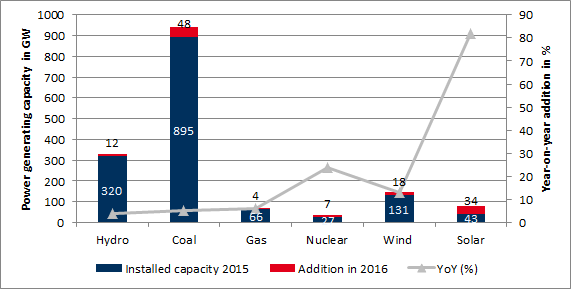PdotMichael
Banned
If renewable energy rendered nuclear plants obsolete we would be seeing a lot more progress of solar and wind farms versus coal in countries that heavily subsidize them. Instead, these forms of energy are replacing fossil fuels at a glacial pace. Meanwhile, the last nuclear plant in the united states started production in the 70s, and yet the U.S. still gets 20% of its power from 76 nuclear power plants. We would have no carbon footprint from power plants already if we never stopped investing in nuclear. And if things keep going the way they are we'd make faster progress investing in nuclear power plants now to be brought up a decade from now while pushing renewables than just putting all our eggs in one basket.
A nuclear power plant can generate in 1 sq mi the energy that wind does over 260-360 square miles, and that's 260-360 square miles of area where no houses, and no trees can exist. The same amount of power can be generated in 45-75 sq miles of solar, and that's also area where nothing grows, and no one lives.
https://www.nei.org/CorporateSite/m...and_Use_Carbon_Free_Technologies.pdf?ext=.pdf
Also, there's a damn good reason that China is investing heavily in nuclear on top of renewables.
The world wide share of renewable energy increased from 19% in 2012 to 26% last year. China was capable of reducing its coal consumption the third year in row, mainly because of the high investment in reneawable energy.
Renewable energy is not just the future but also already lived reality.





